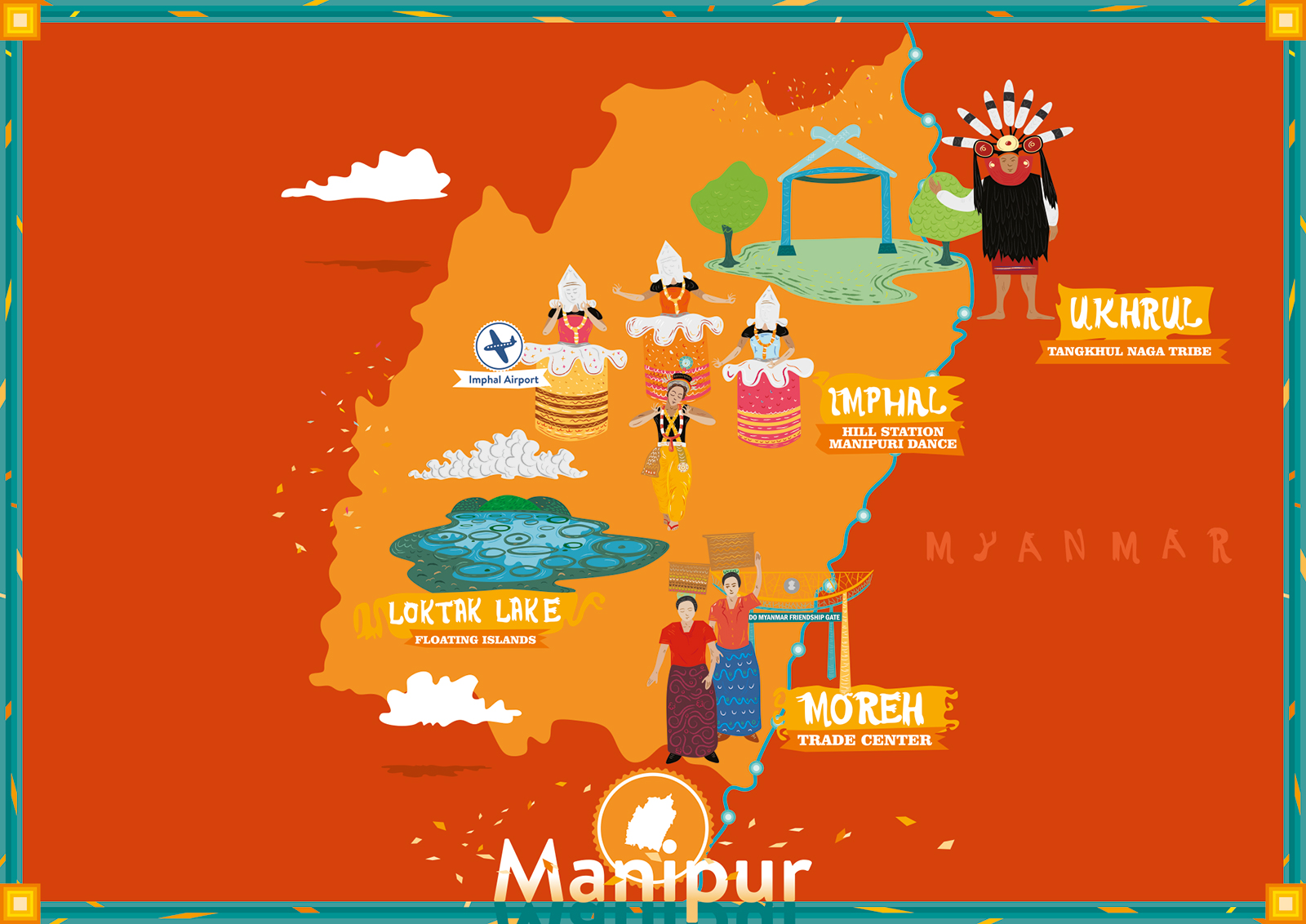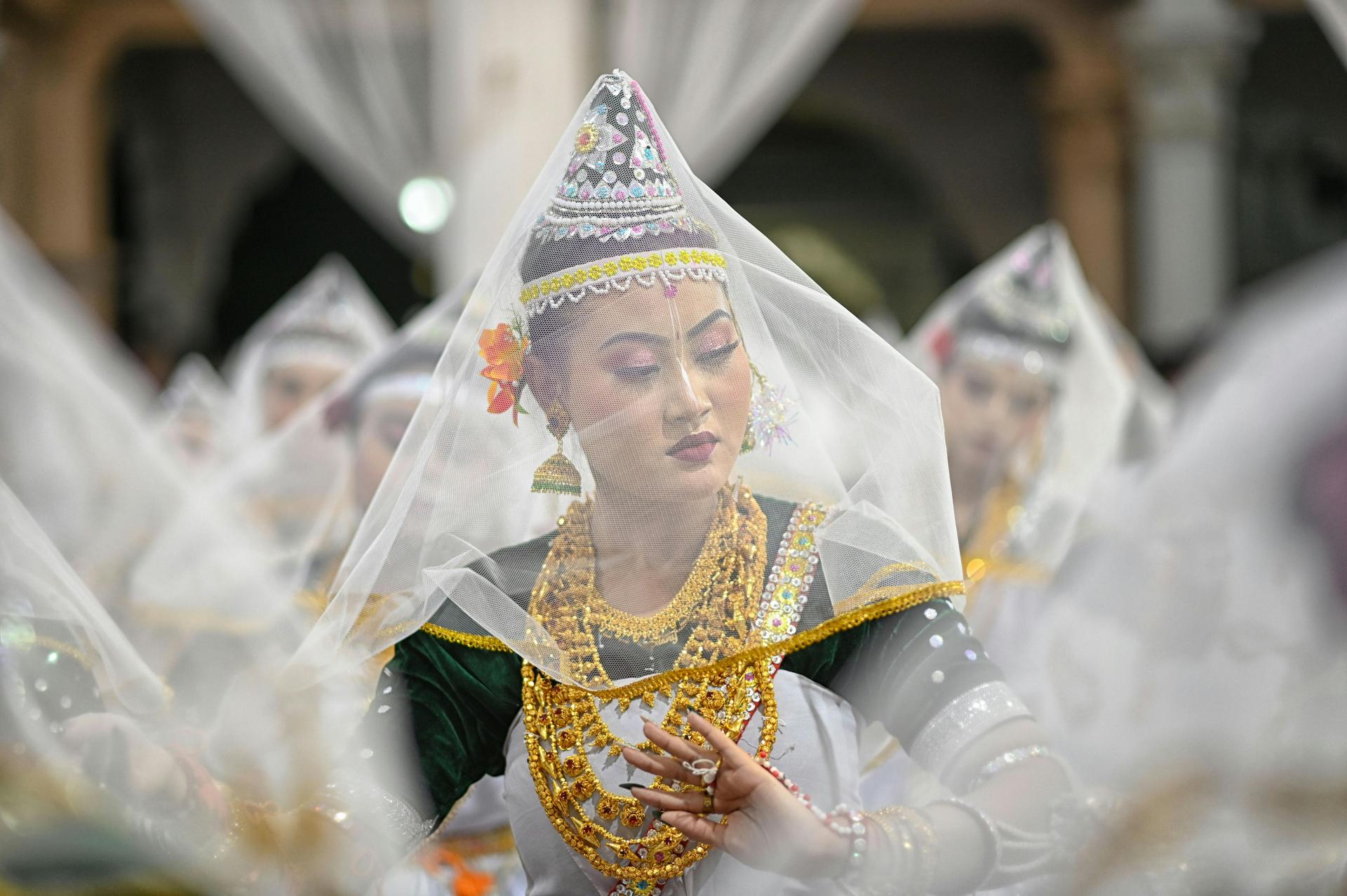The Jeweled Land
"A pretty place, more beautiful than many of the show-places of the world..." wrote Lady Ethel St. Clair Grimwood in her 1891 memoir My Three Years in Manipur.


Walled in seclusion on all sides by blue hills, the little gem of Manipur is rich in arts and culture. The people inherently have a love for art and beauty, and it is hard to find a Manipuri girl who cannot sing or dance. Their creative abilities are best observed in their handlooms and handicrafts which portray the mystique of nature.
Various ethnicities inhabit the jeweled land and have coexisted for centuries. The Meitei people form the major ethnic group and reside in the valley, along with other tribes such as Naga, Kuki, and Mizos who prefer to live in the hills. Hinduism and Christianly are followed extensively along with other animist-based belief systems. The various groups have distinct cultures and traditions in which they take much pride. Meitei-lon is the common language of the state used between the various communities. Hindi and English can be commonly found in many areas.
Manipur's history can be traced back ages and is centered around stories of the forefathers. The land has also seen the horrors of World War 2 under the British Raj with heavy bombardments which destroyed many parts of the Kingdom of Manipur. Today, the war memorial in Imphal stands as testimony to this violent history, and visitors from around the world come here. Another lesser-known war memorial dates earlier, dedicated to the martyrs of 1891 who were hanged on charges of waging war against the Queen of Britain.
For the Manipuri, dance is an integral part of their culture. There has been much written on the Manipuri dance and its lyrical beauty and rhythm. The classical devotional form is distinct from other dance forms of India, famous for captivating beholders with exotic costumes and a simple but graceful rhythm. The common feature of all the dances of the state is a profound devotion to nature. Among the forms, Khamba-Thoiba dance is a duet between a male and female and is considered the origin of the modern Manipuri dance form. The Ras Lila dance is considered the epitome of classical Manipuri dance for its elegant nature, being interwoven with the celestial and eternal love between Radha and Krishna that is portrayed so profoundly in Hinduism.
Like all other states, Manipuris have an affinity for arts in the form of handlooms and handicrafts. Age-old weaving practices are followed throughout the state mostly by women, creating the largest cottage industry in the state. There's a tale behind the origin of weaving here; it was their Goddess Panthoibee who learned it after observing and being fascinated by the fine threads of a spider's web. The designs weaved are peculiar to Manipuri cultures, such as the Phanek or snake design which has red and black stripes as found in some of the snakes in that area. For shoppers and flea market enthusiasts, this means variety, from exotic shawls, lasshingphee blankets, cushion covers, blankets, decorations, baskets, and various bamboo items.
Lastly, the age-old sporting traditions of Manipuris are relevant when discussing culture. They were a result of wars against small kingdoms and Ava (Myanmar), especially martial arts. Sagol Kangjei, the most popular traditional sport, is said to be the origin of modern-day polo. It is said that the British learned to play this sport from the Manipuris in the 19th century.
With over a decade of experience as a leading boutique tour operator in the region, travelling to Manipur with Greener Pastures has its merits. Expect hassle-free insightful journeys in the hands of passionate experts.
contact us